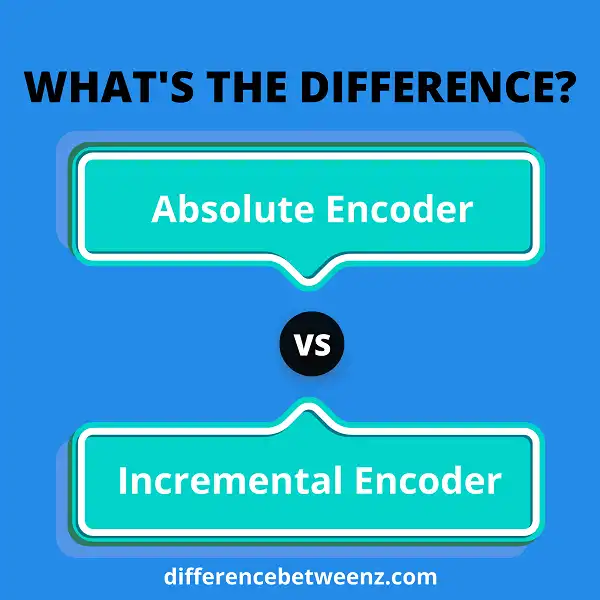The world of motion control systems is vast and complex, made up of a variety of components that allow motors to move with precision. While the complexities can seem daunting, understanding encoders forms the foundation for most any automated application. In this blog post, we’ll take a closer look at two types of encoders: absolute and incremental (also known as a relative). We’ll examine what makes them distinct from one another – namely their output type – explain how they are used in everyday applications and why you would use one over the other. By breaking down these major differences between absolute and incremental encoders, manufacturers can make more informed decisions when choosing an encoding solution for their system design.
What is Absolute Encoder?
- Absolute Encoders are a type of position sensor that provides the highest accuracy and absolute repeatability, meaning it is not necessary to reset its starting position.
- Absolute Encoders detect angle, speed, and direction with precision by using codes on a rotating disk to track the position of machine parts or shafts. This technology was designed to optimize the life span and performance of motors, drives, machines, and production processes for greater reliability in commercial and industrial applications.
- Absolute Encoders improve data accuracy by quickly determining the position of motion components regardless of power loss or interruptions that would otherwise require an external reset. Absolute encoder technology is becoming increasingly popular due to its ability to collect more accurate data quickly and efficiently.
What is Incremental Encoder?
Incremental Encoders are increasingly popular components in motion control systems as they provide position and speed feedback for applications. Incremental encoders measure rotary motion differently than absolute encoders, as their operation relies on the use of disc patterns and sensing elements that compare one point to another, tracking changes in the pattern.
This method allows incremental encoders to find the relative position of a shaft by tracking the number of times they see a certain pattern (usually evenly spaced black and white markings) as it passes by an optical sensor. Incremental Encoders are ideal for applications where positional accuracy and repeatability are essential, such as motor control systems, conveyor belts, and assembly lines.
Difference between Absolute and Incremental Encoders
Absolute and Incremental Encoders are two of the most common methods of feedback control in motion systems.
- Absolute encoders are position feedback devices that use multiple tracks of output to determine the absolute position, which can remain constant even when power is lost.
- By comparison, an Incremental Encoder measures relative motion, similar to a motion sensor, and its output is mainly used for counting applications and speed/direction control – however it returns an uncertain position if the power supply fails.
- Absolute encoders provide more accurate data on position than incremental encoders due to their precision in detecting exact positions despite external disturbances.
Ultimately though, both Absolute and Incremental Encoders are all about keeping track of motion in order to be able to properly control it.
Conclusion
There are two main types of encoders: absolute and incremental. As the name implies, an absolute encoder provides a unique code for each position of the shaft, meaning it can reference a position from a zero point anywhere in its range. An incremental encoder is different in that it doesn’t provide an absolute measure of position; rather, it generates pulses that indicate how far and in what direction the shaft has moved since it was last referenced or “zeroed out.” The most common type of incremental encoder uses quadrature output, which generates two square waves 90° out-of-phase with each other to encode shaft position.


